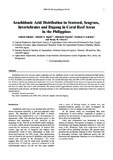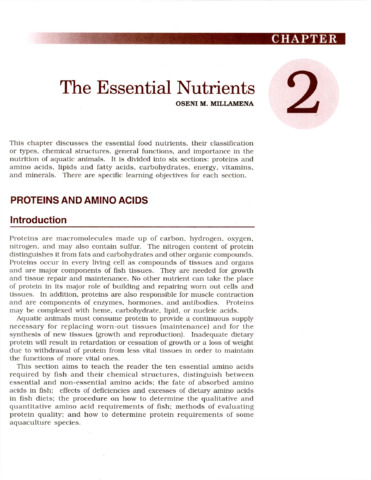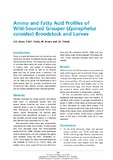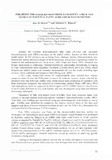Arachidonic acid distribution in seaweed, seagrass, invertebrates and dugong in coral reef areas in the Philippines
- Global styles
- MLA
- Vancouver
- Elsevier - Harvard
- APA
- Help
Share
抄録
Arachidonic acid (ArA) was not a minor component, and ArA distributes widely in coral reef organisms. Seagrass had high linoleic acid and linolenic acid levels with low Ara, EPA and DHA levels, while some species of seaweed had intermediate or high ArA levels (5% to 12%). In starfish, sea cucumber and some species of corals, ArA was the first major fatty acid (20% to 30%), but DHA levels were very low. Bivalves, abalone and shrimps had intermediate ArA levels. Total lipids of abdominal muscle and liver of dugong had respectively ArA levels of 7.8% and 11.0%, which were higher than EPA levels (2.4% and 1.6%), but DHA levels (0.4% and 2.3%) were low. It is clear that ArA is a major fatty acid in coral reef animals. The present results suggest that the existence of an ArA-rich food chain may be widespread in coral reef areas, and that the widespread existence of ArA-rich food chain may lead to intermediate or high ArA contents in tropical species.
Suggested Citation
Suloma, A., Ogata, H. Y., Furuita, H., Garibay, E. S., & Chavez, D. R. (2007). Arachidonic acid distribution in seaweed, seagrass, invertebrates and dugong in coral reef areas in the Philippines. In K. Nakamura (Ed.), Sustainable Production Systems of Aquatic Animals in Brackish Mangrove Areas (JIRCAS Working Report No. 56) (pp. 107-111). Tsukuba, Ibaraki, Japan: Japan International Research Center for Agricultural Sciences
Type
Book chapterISSN
1341-710XCollections
- Books and Book Chapters [123]
Related items
Showing items related by title, author, creator and subject.
-
The essential nutrients: Proteins and amino acids
Millamena, Oseni M. (Aquaculture Department, Southeast Asian Fisheries Development Center, 2002)This section aims to teach the reader the ten essential amino acids required by fish and their chemical structures, distinguish between essential and non-essential amino acids; the fate of absorbed amino acids in fish; ... -
Series: ACIAR Monograph 110
Amino and fatty acid profiles of wild-sourced grouper (Epinephelus coioides) broodstock and larvae
Alava, Veronica R.; Priolo, Flora Mae P.; Toledo, Joebert D.; Rodriguez, Jesus C., Jr.; Quinitio, Gerald F.; Sa-an, Analyn C.; de la Peña, Milagros R.; Caturao, Romeo D. (Australian Centre for International Agricultural Research, 2004)This study was undertaken to provide information on the levels of amino acids in the muscle, liver and gonad of wild-sourced broodstock and larvae, as well as in neurula eggs and day 35 larvae from a hatchery. The fatty ... -
Philippine thraustochytrids from mangroves: A rich new source of essential fatty acids for human nutrition
Oclarit, Jose M.; Hepowit, Nathaniel L. (Marine Science Institute, University of the Philippines, 2007)





